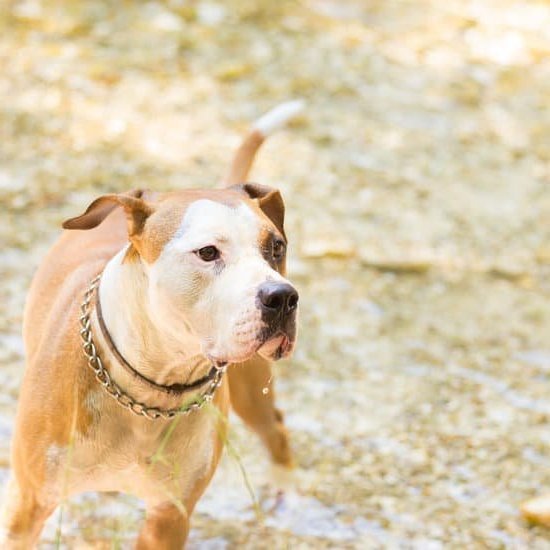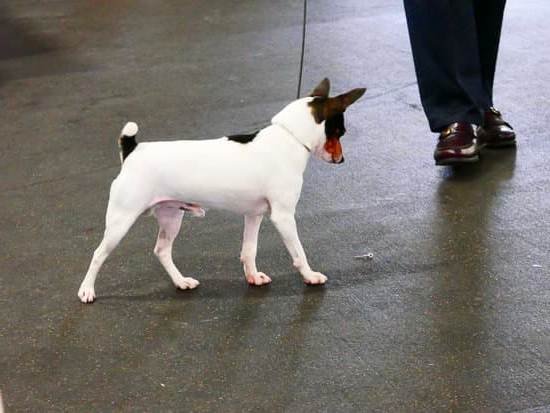Many dog owners find themselves struggling with a dog that pulls on the leash. This can be frustrating and dangerous, as it can lead to the dog getting loose and running into traffic. Luckily, there are some things you can do to train your dog to stop pulling on the leash.
The first step is to make sure that you are using the correct type of leash. A leash that is too thin or too short can contribute to your dog pulling on the leash. Instead, use a leash that is six feet long and made of sturdy material.
The next step is to train your dog to walk at your side. When your dog starts to pull on the leash, stop and wait for them to come back to your side. Once they are by your side, start walking again. Do this every time your dog pulls on the leash, and eventually they will learn that they need to stay by your side in order to keep moving forward.
If your dog is still having trouble walking by your side, you can use a leash correction. When your dog pulls on the leash, quickly pull the leash towards you so that it tightens around their neck. This will cause them to stop pulling and will teach them that this is not an acceptable behavior.
Finally, make sure that you are rewarding your dog for good behavior. When they walk by your side without pulling on the leash, give them a treat or a pat on the head. This will help to reinforce the behavior that you want them to exhibit.
With a little patience and persistence, you can train your dog to stop pulling on the leash. By using the correct leash and following these simple instructions, you can help your dog stay safe and well-behaved.
Dog Training Heel Leash Walking
There are many reasons why you might want to train your dog to walk on a heel leash. Maybe you want to be able to take your dog for a walk without her pulling you every which way. Or maybe you need to be able to control your dog in an emergency situation. Whatever your reasons, training your dog to walk on a heel leash is a skill that will benefit both you and your dog.
The first step in training your dog to walk on a heel leash is to get her used to wearing a leash. Start by putting the leash on your dog when she’s not expecting it. Treat her and give her lots of praise when she doesn’t pull on the leash. Once she’s used to wearing the leash, start taking her on short walks, always rewarding her when she walks at your side.
As your dog gets better at walking on a heel leash, start lengthening the walks. Be sure to keep rewarding her for walking nicely. If she starts to pull, gently pull her back to your side and give her a treat. In time, your dog will learn to walk nicely on a heel leash, making walks much more pleasant for both of you.
How To Train Your Dog To Stop Pulling On Leash
There are a few basic things you can do to train your dog to stop pulling on leash. First, make sure your dog is properly leash trained. This means teaching your dog to stay close to you when on a leash, and to come when called. If your dog is not leash trained, start by teaching these basic commands.
Once your dog is leash trained, you can start working on stopping the pulling. The first step is to make sure your dog is wearing a properly fitted collar and leash. A loose leash will only encourage your dog to pull harder. You also need to make sure you are using the correct type of leash. A retractable leash can actually encourage your dog to pull since it gives them more slack. A good choice for stopping a dog from pulling is a six-foot leash made of sturdy material, like nylon.
The next step is to train your dog to walk at your side. You can do this by providing treats or praise when your dog walks close to you. If your dog starts to pull, gently tug on the leash to remind them to stay close. Be consistent with this training, and don’t allow your dog to pull on the leash.
It may take a little time, but with patience and consistency, you can train your dog to stop pulling on leash.
How To Train Dog Walk Without Leash
There are a few different ways to train your dog to walk without a leash. You can train them to stay close to you, to walk in a specific pattern, or to heel. You can also train them to respond to a cue word or signal to let them know when it’s time to walk.
The key to training your dog to walk without a leash is to start slowly and gradually increase the distance and distractions. Begin by putting your dog on a leash and walking around your house or yard. As your dog becomes more comfortable walking with you, start to take them for walks around the neighborhood. Once your dog is walking comfortably in a variety of environments, you can begin to wean them off of the leash.
One way to train your dog to walk without a leash is to use a cue word or signal. When your dog is walking by your side, give them the cue and release them to walk. If your dog starts to pull or wander away, give them a quick tug on the leash and then release them. Be sure to reward your dog with a treat or praise when they walk by your side without pulling or wandering.
Another way to train your dog to walk without a leash is to use a training collar. A training collar is a collar that tightens around your dog’s neck if they pull on the leash. As your dog becomes more comfortable walking without a leash, you can start to decrease the amount of tension on the training collar. Be sure to reward your dog with a treat or praise when they walk by your side without pulling or wandering.
How Do You Leash Train An Older Dog
?
It can be a challenge to leash train an older dog. This is because older dogs may have developed bad habits over time or they may be resistant to change. There are a few things that you can do to make the process easier, though.
First, you should start by making sure that your dog is physically healthy. If your dog is in good health, then you can start to work on the behavioral issues. One way to do this is by using positive reinforcement. When your dog does something good, reward them with a treat or with petting. This will help to show your dog that good behavior is rewarded.
You should also make sure that you are consistent with your commands. If you tell your dog to sit and then let them walk away, they will not understand what you are asking them to do. Be sure to give them clear commands and then praise them when they obey.
Finally, it is important to be patient with your dog. It may take some time for them to understand what you are asking them to do. Be sure to take things slow and to reward your dog when they make progress.

Welcome to the blog! I am a professional dog trainer and have been working with dogs for many years. In this blog, I will be discussing various topics related to dog training, including tips, tricks, and advice. I hope you find this information helpful and informative. Thanks for reading!





